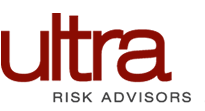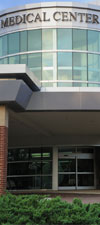While ready to take on the life and death challenges of their patients, many medical facilities and healthcare providers are ill prepared to deal with a potential onslaught of media during or following a crisis. From media coverage to reputation management to possible litigation, a public relations and media management plan is the best way to minimize the damage of an unplanned event.
#1: Start with the disaster plan –When developing a disaster plan, consider adding public relations management to your plan so that the media can become an asset instead of an adversary. As with disaster planning, managing the media and community opinion is essential to the survival of the facility and its reputation.
#2: Designate a crisis team – Have a pre-designated crisis team with each member’s role outlined as part of your preparedness plans. Inform all of your staff which of their crisis team members will take on the role of media correspondent. You may even want to supply the crisis team members with identification badges (kept as part of the disaster kit) so the media knows they are dealing with the single person in the facility that can provide them with updates. Be sure to include one person to monitor social media and post the latest information to keep followers informed.
#3:Train staff on media communication – Be prepared for the media to approach employees to get the “scoop” in the crisis. Clearly communicate with all employees that they should not be speaking to the media. Give staff a phrase to use if media should approach them for comments. If all staff members use the same phrase, media will not pursue multiple staff members for comments. Phrases such as “Your questions can be answered by our media representative” will be easy for staff to remember and protect them from media barrage.
#4: Appoint spokespersons – Designate qualified spokespersons to deal with the media, patients and staff:
Media Spokesperson: The media spokesperson must be articulate, able to handle emotions and rapid fire questions. Being in front of the camera is a skill few have been comfortable with. What is said to the media has an impact that is long lasting and directly affects the reputation of the facility following the crisis.
Family Spokesperson: It is always best to inform families before the media reports the crisis. The person responsible for informing families needs to be one who can remain calm and upbeat in the face of impending crisis reactions from family members.
Staff Spokesperson: The staff spokesperson must be someone trusted by staff to be supportive, factual and truthful. Keeping the staff from reacting in a negative way is important to crisis management. If staff perceives that management is worried, frightened or misdirected, direct care staff will react unfavorably.
#5: Be Truthful at all times – The public will respond most favorably if they feel the facility staff was truthful and forthcoming. Never place blame or make excuses publicly. Use professional terms, articulate descriptions and accurate facts. The public is often more willing to assist local medical facilities to survive after a crisis if they trust the facility and feel they handled the crisis honestly and with integrity.
Bottom line – be prepared. From the newly opened picture perfect medical practice to the health facility with a long history of serving the community, crises are a real risk of everyday operations. A public relations and media management plan is the best way to minimize the damage of a crisis and to ensure prosperity in its wake.







COMMENTS
No comments yet. You should be kind and add one!
The comments are closed.